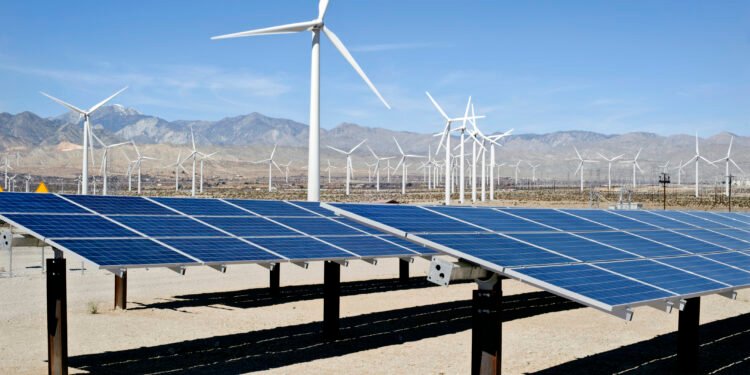The artificial intelligence revolution has created an unexpected bottleneck that threatens to constrain the technology’s advancement: access to electricity. This infrastructure challenge has transformed the data center industry from a relatively straightforward real estate business into a complex power procurement operation where companies compete not just for computing equipment and facilities, but fundamentally for the electrical capacity needed to operate them. The evolving dynamics are perhaps best illustrated by Core Scientific’s remarkable transformation from bankruptcy to a $9 billion acquisition target in less than two years, driven almost entirely by its access to electrical power.
From Bankruptcy to Billion-Dollar Asset
Core Scientific’s trajectory represents one of the most dramatic corporate turnarounds in recent technology industry history. The company began as a cryptocurrency mining operation that filed for bankruptcy as the crypto market collapsed. However, rather than liquidating assets, Core Scientific recognized an opportunity to repurpose its infrastructure for a different computationally intensive application: artificial intelligence data center operations.
This strategic pivot proved remarkably successful. In July, CoreWeave, a publicly traded data center company valued at approximately $60 billion, announced an agreement to acquire Core Scientific in an all-stock transaction that valued the target company at roughly $9 billion. For a company that had recently emerged from bankruptcy proceedings, this valuation represented an extraordinary recovery driven primarily by a single critical asset: access to electrical power.
Shareholder Opposition and Valuation Disputes
The proposed merger has encountered significant opposition from Core Scientific’s investor base, highlighting disagreements about the company’s fundamental value proposition. In early September, Two Seas Capital, one of Core Scientific’s largest shareholders, released a draft proxy letter urging stockholders to vote against the proposed merger, arguing that the $9 billion valuation substantially undervalues the company’s assets and growth potential.
Two Seas Capital’s opposition centers on Core Scientific’s power portfolio, which the investment firm characterizes as providing “a critical first-mover advantage, significant scale and ready access to low-cost power.” The firm’s letter states its belief that these attributes position Core Scientific “to emerge as a clear leader and compound growth for years to come,” suggesting that the company’s value should exceed the proposed acquisition price.
Kevin Dede, an equity analyst at H.C. Wainwright who covers Core Scientific, describes the merger as now being “in peril” due to this shareholder opposition. The dispute illustrates how power access has become the primary valuation driver for data center companies, potentially outweighing traditional real estate metrics or operational capabilities.
The Scale of Electrical Demand
The proposed CoreWeave-Core Scientific merger would create a combined entity with electrical capacity exceeding 2 gigawatts, providing context for the scale of power consumption involved in modern AI data center operations. To put this figure in perspective, 2 gigawatts represents approximately one-third of New York City’s average daily electrical capacity, highlighting the massive infrastructure requirements of artificial intelligence computing.
CoreWeave maintains confidence in completing the acquisition despite shareholder opposition. A company spokeswoman stated that CoreWeave is “confident in securing the approvals necessary to complete the acquisition of Core Scientific” and emphasized that the deal will “strengthen our ability to meet the extraordinary demand we see” for AI computing services.
The electrical capacity that would result from this merger reflects broader industry trends where data center operators compete intensely for power access. Dede notes that “there is a lot of value in being able to secure power and surmount the roadblock that everyone in the industry is facing, which is access to power,” explaining why electrical capacity has become the critical competitive differentiator in the sector.
Industry-Wide Power Constraints
The power access challenge extends well beyond individual merger negotiations to constrain the entire data center industry’s growth trajectory. According to commercial real estate services firm CBRE, approximately 5.2 gigawatts of new data center capacity was under construction in prime U.S. markets during the first half of 2025, representing a 17.5 percent decline in the industry’s construction pipeline compared to the same period in the previous year.
Pat Lynch, global head of CBRE’s data center solutions team, attributes this decline primarily to electricity scarcity rather than demand weakness. “It is not a lack of demand, it’s a lack of supply, specifically utility power,” Lynch explained. “Absent of power and equipment limitations, that supply delivery number would be significantly higher.”
This supply constraint occurs despite unprecedented demand for data center services driven by artificial intelligence applications. The disconnect between robust demand and constrained supply creates market conditions where power access becomes the primary determinant of competitive advantage and corporate valuations.
Market Growth Projections and Investment Flows
Despite current supply constraints, long-term projections for the data center industry remain extraordinarily bullish. McKinsey estimates that data center electrical demand will reach 80 gigawatts by 2030, representing more than a threefold increase from current levels. The consulting firm further projects that $2.8 trillion will be invested in data center development by the end of the decade.
These growth projections have attracted substantial institutional investment capital to the sector. John Dinsdale, chief analyst and research director at Synergy Research Group, reports that $46.1 billion in data center merger and acquisition deals closed during 2025, with an additional $34 billion in pending transactions. If all pending deals close by year-end, 2025 would establish a record for data center transactions by dollar volume.
The investment thesis driving this capital deployment centers heavily on power access. Major investors specifically target acquisition candidates with substantial electrical capacity portfolios, recognizing that power availability represents the fundamental constraint on industry growth and competitive positioning.
Strategic Transactions Centered on Power Assets
Recent major transactions in the data center sector illustrate how power capacity dominates strategic decision-making and valuation considerations. Apollo recently announced acquisition of a majority interest in Stream, a prominent data center company, specifically highlighting that the target “controls over 4 gigawatts” of power capacity.
Similarly, investors Snowhawk and Nuveen announced in July their purchase of an undisclosed stake in Prime, another notable data center operator. The announcement emphasized Prime’s “4 gigawatt roadmap of power across top-tier markets” with more than one gigawatt “deliverable between 2025 and 2028.”
Biff Ourso, Nuveen’s global head of infrastructure, confirmed that power access represents a critical evaluation criterion for data center investments. “It’s a critical piece of the equation for us: what is the development pipeline and what is the contracted power,” Ourso explained. “Access to powered land for development, that is the big gating issue for the industry today.”
These transaction announcements demonstrate how power capacity has become the primary metric by which data center assets are evaluated and marketed, often receiving more emphasis than traditional real estate factors such as location, building quality, or operational efficiency.
Supply-Demand Imbalance and Grid Constraints
Goldman Sachs analysis suggests that despite substantial new data center development, supply will continue lagging demand by approximately 10 percent annually through 2028, with electrical grid constraints identified as a primary limiting factor. This persistent supply deficit ensures continued competitive intensity around power procurement and secures premium valuations for companies with established electrical capacity.
Dan Dees, co-head of global banking and markets at Goldman Sachs, emphasized that power availability represents a more significant constraint than capital availability for artificial intelligence advancement. “A lack of capital is not the most pressing bottleneck for AI progress — it’s the power needed to fuel it,” Dees wrote in the firm’s analysis.
This assessment reflects a fundamental shift in how technology infrastructure development is constrained. Historically, computing advancement has been limited by factors such as semiconductor technology, software capabilities, or capital availability. The current era represents perhaps the first time that electrical grid capacity has emerged as the primary bottleneck for technological progress.
Geographic Expansion and Alternative Locations
Power scarcity in traditional data center markets has driven industry expansion into previously overlooked geographic locations that offer available electrical capacity. In June, data center developer Applied Digital announced that CoreWeave had agreed to lease 250 megawatts of capacity at a facility Applied Digital is constructing in Ellendale, North Dakota, with rights to expand operations by an additional 150 megawatts.
By August, Applied Digital announced that CoreWeave had exercised this expansion option, demonstrating the rapid pace at which power-constrained operators are securing additional capacity wherever it becomes available. The company’s willingness to expand operations in a non-traditional data center location like North Dakota illustrates the premium placed on power access relative to other location factors.
Dede characterized CoreWeave’s North Dakota expansion as “illustrative of the intense demands across the industry and how competitive it is,” explaining that companies are increasingly willing to accept less optimal locations in exchange for reliable power access.
Infrastructure Implications and Future Outlook
The data center industry’s power crisis reflects broader challenges facing electrical grid infrastructure across developed economies. Decades of underinvestment in transmission and generation capacity have created systems struggling to accommodate new large-scale industrial loads while simultaneously supporting electrification of transportation and building systems.
Addressing these infrastructure constraints will require coordinated efforts involving utility companies, regulators, data center operators, and potentially government intervention to accelerate grid expansion and modernization. The extended timelines typical for electrical infrastructure development suggest that power constraints will continue influencing data center industry dynamics for years to come.
The CoreWeave-Core Scientific merger dispute provides a microcosm of these broader industry dynamics, illustrating how power access has become the defining characteristic of data center asset value. Whether this particular transaction ultimately succeeds or fails, the underlying dynamics driving the valuation debate—the critical importance of electrical capacity for artificial intelligence infrastructure—will continue shaping the industry’s evolution and competitive landscape for the foreseeable future.
The transformation of Core Scientific from bankrupt cryptocurrency miner to multi-billion dollar acquisition target based primarily on power access demonstrates how fundamentally the data center industry has changed. In this new paradigm, success depends less on traditional real estate or technology capabilities and more on the ability to secure and maintain access to the massive amounts of electrical power that artificial intelligence applications demand.
Acknowledgment: This article was written with the help of AI, which also assisted in research, drafting, editing, and formatting this current version.







